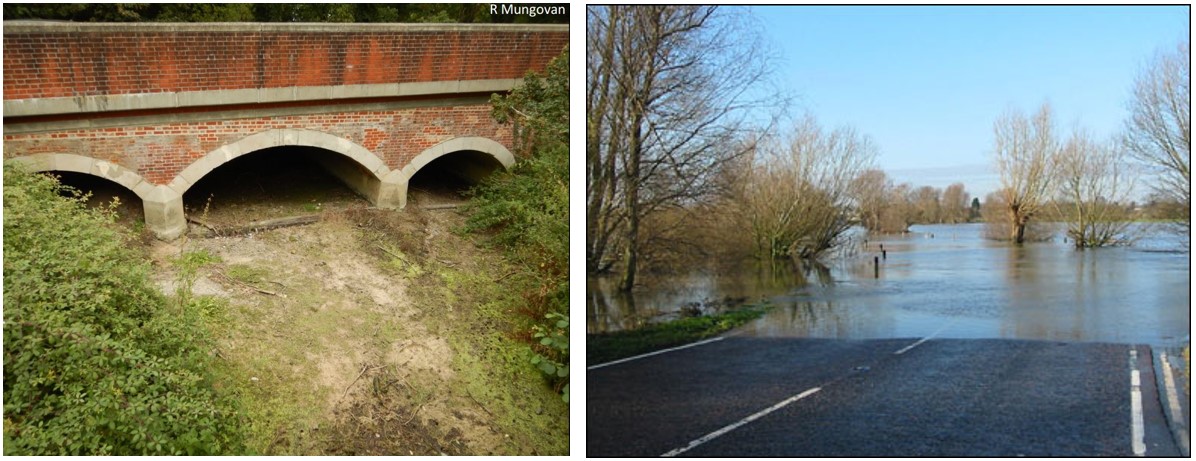Cambridgeshire is at risk from both drought and flood.
Drought
Cambridgeshire is the driest part of Britain, with nationally important chalk streams and highly variable rainfall. The Chalk aquifer that supplies 97% of our public water supplies is under unsustainable pressure: over-abstraction means that already it cannot keep our chalk streams running as they should through the year and the pressures of increasing population, economic growth, intensive land management and climate change will only make a bad situation worse.
The River Cam has already lost about half its average natural flow. Increasingly frequently, wetlands and the upper reaches of our chalk streams dry out, while most of the Cam Valley’s rivers are of only ‘moderate’ water quality as a result of pollution by nutrients, sediment and sewage. The situation becomes critical in the summer, when high temperatures and low river flows can combine, turning the River Cam into a stangant, smelly soup.
In an attempt to maintain river flows and dilute the concentrations of sewage effluent and other pollutants to permitted levels, about 20% of our precious ground water is pumped out of the aquifer into the rivers. Without this, our Chalk streams would have died. But this circular process of abstracting scarce water from the aquifer and in order to augment the Chalk streams is ecological madness: we need to reduce water demand, stop wasting water and stop putting so much pollution into our rivers.
Flood
In winter, increasingly variable and intense rainfall is causing more frequent flooding. This damages homes, businesses and farmland, while a large quantity of much needed water, which we ought to be storing for use in the summer, rushes out to sea, carrying our soil with it.
Increasingly frequently, storms overwhelm the sewage treatment works, causing a Combined Sewage Overflow (CSO) of untreated (but diluted) sewage into the rivers and standing floodwater.
Our campaign
Cam Valley Forum is campaigning for an end to over-abstraction and the restoration of naturally healthy rivers: This can be achieved by:
- substantially reducing groundwater abstraction from the Chalk aquifer;
- investing in alternative sources of surface water to replace groundwater;
- treating sewage to high standards so that it can be reused for public water supplies and to recharge the aquifer;
- building rainwater harvesting and recycling systems into all new developments;
- resolutely driving down demand for water in homes and businesses
- significantly reducing water pollution and investing in work to enhance habitats and natural processes;
- improving resilience, not only for public water supplies but also for the environment
See our key reports, and other resources relating to water pollution, drought and flood here
Our consultation responses and submissions to the key bodies working on future policies are available here.

